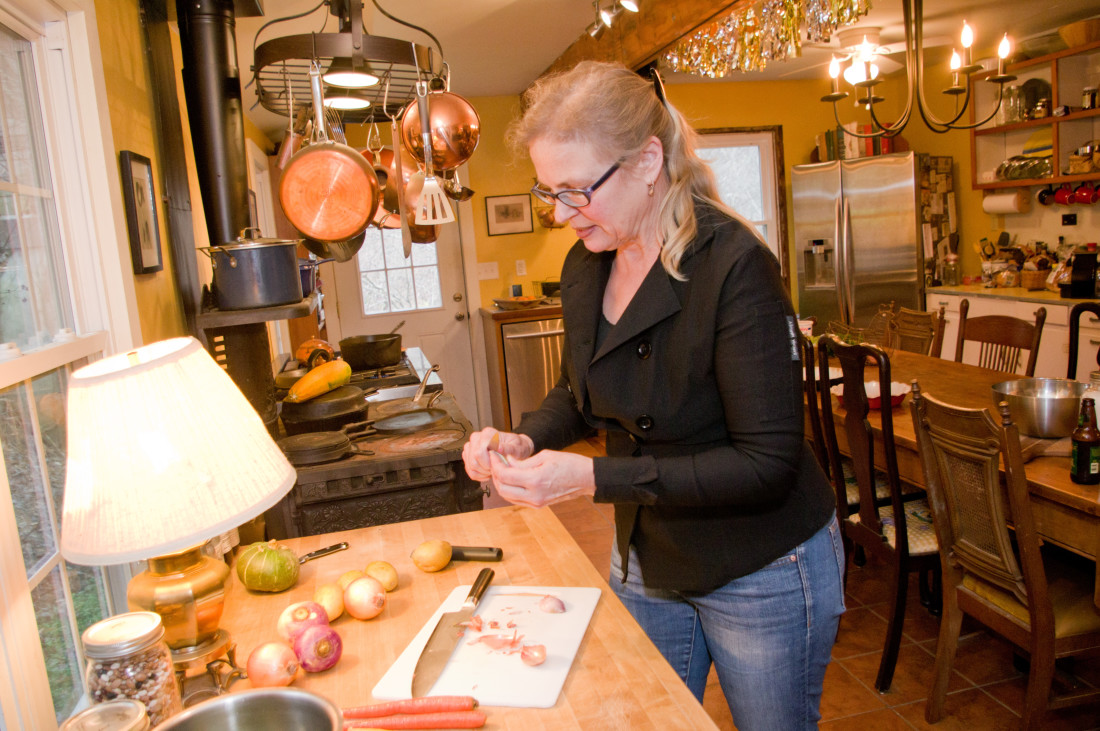Go ahead and look, because it’s probably back there. In the nether regions of the fridge, right behind the flax seed butter and other rarely used items, is that endive you heard about on NPR and decided to pick up at the grocery store, just to give it a try. But then you forgot about it, and now it’s wilting away in the recesses of your Frigidaire, another case of food waste, a sin of which all of us are guilty.
The Food and Agriculture Organization of the United Nations estimates that one-third of the food humans grow for their own consumption is never eaten. Bringing it closer to home, Buncombe County sends 27,809 tons of food to the landfill each year, which amounts to about 4-5 pounds of food per week for each county resident, according to the 2012 N.C. Food Waste Generation Study. That’s a lot of wasted meals, especially for food-insecure states like North Carolina, which the U.S. Department of Agriculture calls the eighth-hungriest state in the nation.
That waste also takes a toll on the environment. The Water Footprint Network calculates that it takes more than 1,800 gallons of water to produce 1 pound of beef. That means when you toss the last half of your quarter-pound burger in the trash, you’ve essentially flushed away close to 230 gallons of water.
Cutting food waste in the United States by just 15 percent could provide sustenance for more than 25 million people every year, says 2012 data from the National Resources Defense Council. And although some of the onus does lie with farms, grocery stores and restaurants, the same report states that American families throw about 25 percent of the food and drinks they buy in the trash (to the tune of about $1,365 to $2,275 annually for a household of four) — clearly there is a lot individuals can do to alleviate the problem. So Xpress asked local chefs and cookbook authors for some tips on reducing food waste at home.
Loss equals cost
It is a long-held economic theory that reducing waste naturally reduces the cost of any product in any market. It follows that decreasing the amount of waste in the home kitchen can shrink your grocery bill.
“Ultimately, food loss equals food cost,” says chef William Dissen of The Market Place restaurant. Dissen knows the issue not just from a professional culinary perspective, but also from a policy standpoint: He’s a representative for the U.S. State Department’s American Chef’s Corps and recently consulted for the United Nations Sustainable Development Goal 2, lobbying for sustainable global agriculture.
“All of the trim, the ugly vegetables, the vegetables that are turning — they all cost money,” he says. “So instead of just haphazardly throwing them away, we put our mind to it and work to create something delicious from what otherwise might be considered trash.” The trimmings, stems and skins from veggies, and even the bones from fried or rotisserie chicken can make a great stock: Just save them in a resealable bag in the freezer until the bag fills up, dump them it a pot with water and salt, and let them simmer for a few hours — a slow-cooker or Instant Pot works well for this.
“There are just a few ingredients you can keep in your pantry or fridge that really make leftovers sing,” says Susi Gott Séguret, cookbook author and Seasonal School of Culinary Arts founder. Stocking dried goods like pasta and rice, high-quality soy sauce and other condiments plus decent butter or oil can make it easy to turn any random assortment of leftovers into a tasty meal, she points out.

Shallots are also great to keep on hand for resuscitating past-their-prime items. “If you sauté shallots in garlic and butter, and then just add anything to them, it makes a nice stir-fry,” she explains. “It makes a good soup base, sauce base — particularly with any kind of cream sauce or mushroom sauce.”
Canned goods are useful as well. “If you always have, say, a can of beans — just something like white beans or black-eyed peas — you can always sauté them with some shallots and throw in a few tomatoes and make a sauce for pasta or the basis for a soup. Or you can put them in a stir-fry or make that the basis for an omelet or a quiche,” she says.
“Soups, soups, soups,” Séguret says, are another way to revive wilted veggies and repurpose leftovers. “The French very commonly do puréed soups, so if your vegetables aren’t looking so good, that’s always an option for how to handle them. The French standard is just leeks or even just onions, carrots and potatoes.” She recommends using an immersion blender or food processor for the puréeing.
Puréed veggies can also be helpful in making sauces. Old carrots work great for making a vodka sauce. Variations on pesto-style sauces are also easy to make with pungent green herbs like basil, cilantro or parsley mixed with olive oil, nuts and garlic.
You can also use past-their-prime tomatoes and bell peppers that might otherwise be wasted to whip up faux romesco sauces. Traditional romesco calls for red bell peppers, almonds, garlic and day-old bread, but feel free to use other types of peppers — green peppers make for a more sour sauce, and yellow ones give it a sweeter taste. Even a simple scratch-made tomato sauce can be made of tomatoes, garlic, onions and herbs.
And don’t forget about using your freezer. Remember that bundle of cilantro that you bought but only used a tablespoon’s worth? Most green herbs can be puréed then frozen for later use. And most scratch-made sauces will also freeze really well.
Outside the to-go box
Don’t throw away that stack of soggy to-go boxes gleaming in the fridge light. “I hear it all the time, people saying that they don’t want to take their leftovers home because they don’t like eating the same thing the next day,” says Cathy Cleary, Asheville cookbook author and food justice activist. “I get that, but you can make something different with it. Take that leftover piece of fish and make soup or make tacos with it.”
Leftover grits, she continues, can make a tasty soufflé or crust for pie. Salads are another possibility. “I love making salads out of leftovers,” she says. “A bed of lettuce, a cut of meat from dinner the night before, some chopped up veggies, potatoes, anything.” Even that Mexican rice and last quarter of enchilada stuck to the bottom of the styrofoam box your kid brought home three days ago can make for a killer salad — and it’s fun to pretend it is healthy, even when it’s smothered in dressing and leftover salsa.
“My other favorite use of leftovers is pizza,” says Cleary. “I love to reduce butternut soup to make it thicker and make a sauce for pizza — it’s actually one of my very favorite things. It’s really great with parsnips and goat cheese and thinly sliced onion. Also, something I think some people don’t think about is making frittatas. But pastas, potatoes, leftover meats — any of that can be great in a frittata.”
Dissen observes that waste can be greatly reduced just by planning ahead a little before hitting the grocery store. “Write a menu for the week, then write an ingredient list and prep list, and go to the store and only buy what’s needed,” he advises.
Leftovers from the roasted chicken you make on Monday can be used to make chicken soup on Wednesday (reserving the bones to make the broth). The dregs of the soup could even morph into a casserole or frittata on the weekend. “You’ll not only save hard-earned money,” says Dissen, “but you’ll find yourself getting crafty in the kitchen.”




Very good article! I happen to believe that food waste is near criminal. It’s easy to simply put most items that are moving past their prime into the freezer and pull them out later as contents for soup.
Canning while the food is still fresh is also a good strategy. It’s such a shame to let quality, locally-grown produce go to waste.